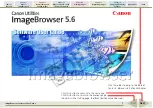
182
Universal T1 WAN (UTWAN)
N0008589 3.3
5
Press the
TAB
key to save your settings.
Fragmentation
Trigger
Select
FrameSize
if you want Business Communications Manager to use the size of the packet
to decide if the packets need to be fragmented.
Select
DelayTime
if you want Business Communications Manager to use delay time to decide if
the packets need to be fragmented.
Frame Size
This parameter is only available if you selected
FrameSize
for the Fragmentation Trigger
parameter.
Enter the maximum frame size in bytes. Any packets that have a frame size larger than the size
specified are fragmented.
Possible values are
160
to
800
bytes.
The default value is 256 bytes.
Delay Time
This parameter is only available if you selected
DelayTime
for the Fragmentation Trigger
parameter.
Enter the maximum delay time, in milliseconds, for the packets. If the delay time exceeds this
value the packets are fragmented.
Possible values are 10 to 40 milliseconds.
The default value is 10.
Low Water Mark
This is one of the parameters that controls the link layer queuing behavior for PPP when link layer
fragmentation is enabled.
Possible values are
1
to
7
.
The default value is 6.
Note
: Nortel Networks highly recommends that you do not change the Low Water Mark from the
default value.
High Water Mark
This is one of the parameters that Controls the link layer queuing behavior for PPP when link
layer fragmentation is enabled.
Possible values are
2
to
8
.
The default value is 7.
Note
: Nortel Networks highly recommends that you do not change the High Water Mark from the
default value.
Note
: The High Water Mark must be a larger than the Low Water Mark.
Table 24
PPP Parameters (Continued)
Attribute
Description
Summary of Contents for BCM 3.7
Page 4: ...4 Software licensing N0008589 3 3...
Page 32: ...32 Contents N0008589 3 3 W 937 Index 939...
Page 46: ...46 Tables N0008589 3 3...
Page 64: ...64 How to get help N0008589 3 3...
Page 90: ...90 Manually activating Telnet N0008589 3 3...
Page 116: ...116 Delayed system restart N0008589 3 3...
Page 194: ...194 Configuring a data module N0008589 3 3...
Page 276: ...276 Setting line telco features N0008589 3 3...
Page 310: ...310 Using COS passwords N0008589 3 3...
Page 364: ...364 Enhanced 911 E911 configuration N0008589 3 3...
Page 380: ...380 Renumbering DNs N0008589 3 3...
Page 398: ...398 Saving wizard pages on your computer N0008589 3 3...
Page 458: ...458 Voice Mail settings N0008589 3 3...
Page 488: ...488 Setting system telco features N0008589 3 3...
Page 508: ...508 Other programming that affects public networking N0008589 3 3...
Page 522: ...522 PRI networking using Call by Call services N0008589 3 3...
Page 592: ...592 Monitoring Hunt groups N0008589 3 3...
Page 636: ...636 Configuring Double Density N0008589 3 3...
Page 640: ...640 Using the Network Update Wizard N0008589 3 3...
Page 666: ...666 Importing and Exporting DHCP data N0008589 3 3...
Page 722: ...722 Restarting the router N0008589 3 3...
Page 726: ...726 Important Web Cache considerations N0008589 3 3...
Page 748: ...748 Configuring an Interface with NAT N0008589 3 3...
Page 794: ...794 IPSec N0008589 3 3...
Page 818: ...818 Configuring the Policy Agent characteristics N0008589 3 3...
Page 832: ...832 Firewall rules for Business Communications Manager with Dialup interfaces N0008589 3 3...
Page 876: ...876 ISDN Programming N0008589 3 3...
Page 1004: ...1004 Index N0008589 3 3...
















































